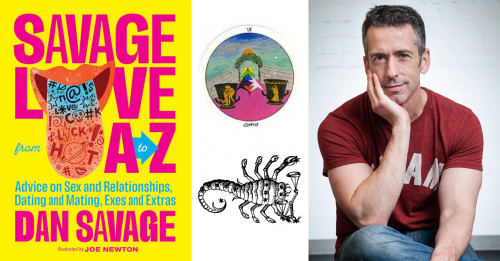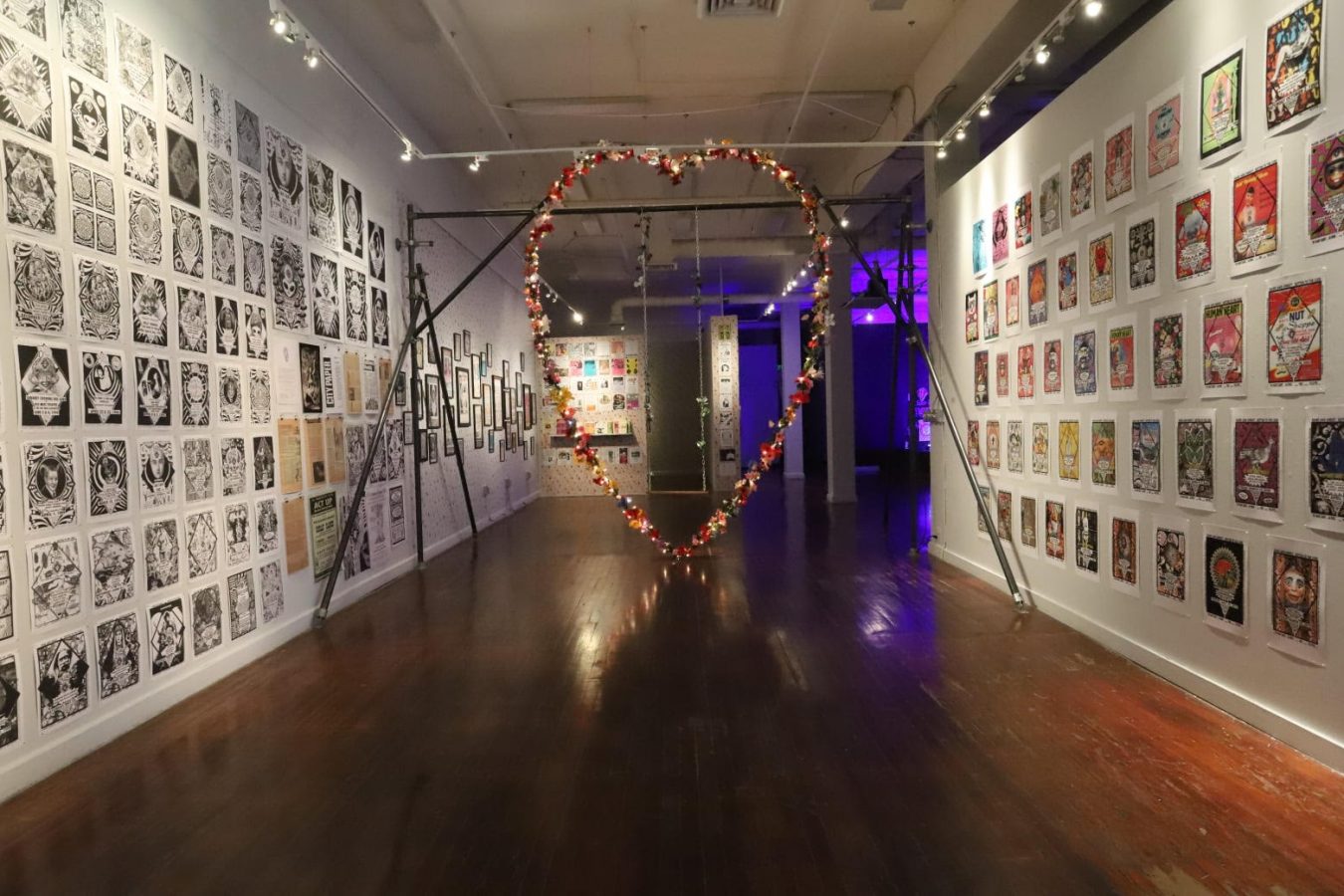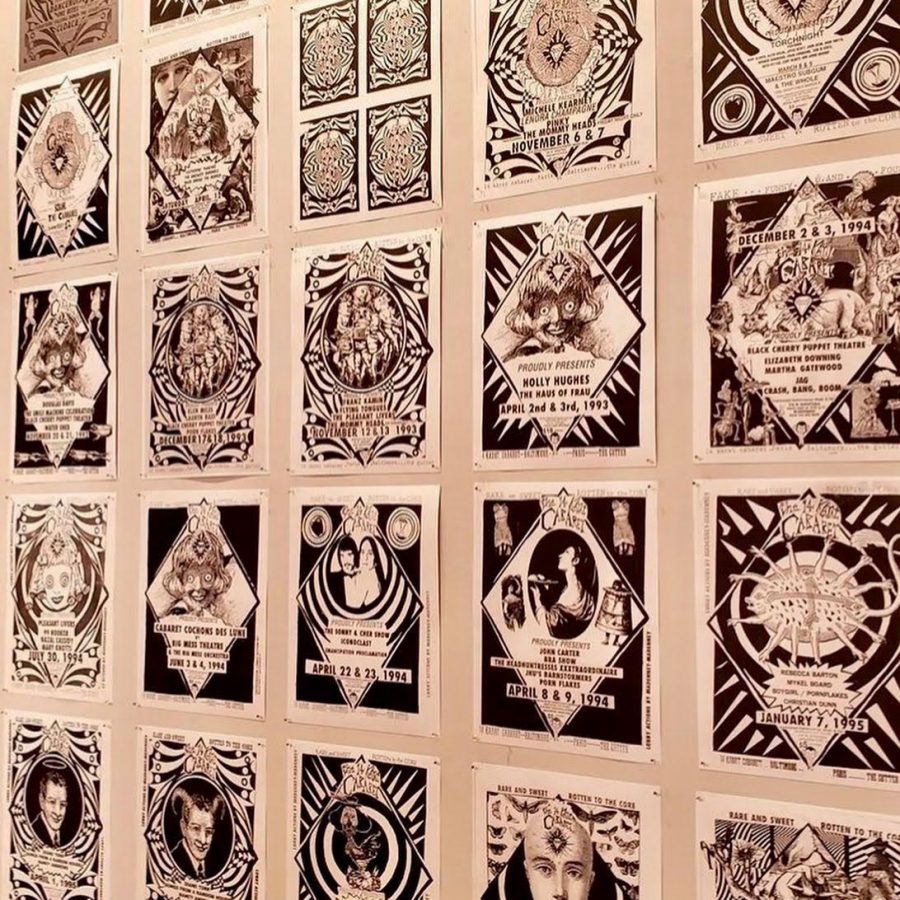I get a little dizzy looking at all the names. I didn’t start coming to the Cabaret until around 2003, and I feel like I would have been here every time. So many stars and artists who went on to be stars: Tim Miller, Annie Sprinkle, Martha Colburn, Susan Alcorn, Of Montreal, Chet Pancake. I feel like this one really speaks to Baltimore’s history as a centerpiece for performance.
Yeah, look [pointing at a flyer]—Tony Conrad and Dan Conrad and Bradford Reed, same night. I mean, that was a stellar night, for five dollars. We did ACT UP benefits, and we did AIDS Action. We were active, providing a place for people to talk about this situation and raise money and help, as best as we could. Notice, it was like $3 to get in.
Another thing that was really great, we did a torch night with Ruby Glover, Aleta Green, Joyce Scott, John Dean, Anne Watts, Howard Markman, Craig Considine, Tom DiVenti, Ruth Pettus… four dollars, can you believe that?
Sheila Gaskins performed a couple of times. Lenora Champagne, an amazing performer from New York, and this composer Franz Kamin, who died in an automobile accident, it was very tragic. Bashi Rose, who just performed in High Zero. The Tinklers, and sometimes I wonder whatever happened to David Greenberger. I have a whole shelf with all his publications. He’s so brilliant. He worked in nursing homes and he would interview people that lived in them and then he would [read] little snippets. He really brought that situation to life and with words.
Beat Happening—and Magnetic Fields! Wait, Lambs Eat Ivy and Mecca Normal played on the same night?
There’s a good four-dollar admission. For some shows, if I was to bring someone from out of town like Mecca Normal, you really needed to have a hard hitter because sometimes nobody would know who the hell they were and there was like three people there. Even this show ended up being okay, but here we had Pat Oleszko, which was a great show, and it was not as full as I felt it should be.
Gary Corbin was really an interesting performer from Baltimore. This was a really tricky mix because Visions was an amazing gospel group, and Gary is also a queer, disabled, Black performer, he’s missing a leg. The group was so amazing, their voices were so beautiful, and Gary did what Gary does, his one-person show about the situation of being not just gay but also handicapped and Black and how all those are the worst things and, you know…
Kind of a collision of worlds?
Yeah, unfortunately. But look, this is Dawn Culbertson.
I miss Dawn. I got to share the stage with her once at the Charm City Kitty Club. She played heavy metal and punk songs with a lute.
Before Dawn died I made a number of videotapes of her. I wanted to do a little film on her because she was a fascinating, fascinating person.
And this is Keri Burneston, who wasn’t going by “Trixie Little” yet. This was the opera that Fluid Movement did, the Hot Dog Opera—and they didn’t go by “Fluid Movement” yet.
There’s so much Baltimore art history here! The Cabaret launched so many things.
I would love to do an entire history of performance. I actually started it with David Crandall, just amassing stuff of people before I was here. But it’s just such a hard ball of wax.
I was so happy to see the return of the altar, because it was always such a presence walking into this space. It was always right there in the entranceway, I could spend a little time while I’m waiting for the show to start and looking at my favorites and at names that I’d never encountered for whatever reason. It’s so interesting that this show is happening now, during this pandemic, at a time when I don’t really feel like people are being memorialized at all.
The AIDS altar was a sort of shrine. I made the votive cards, and almost all of these people are artists, from culture makers or thinkers like Foucault or theatermakers like Ludlam. Cookie Mueller, who was a brilliant writer. I had to put Roy Cohn in because he’s, of course, our Joker in the day. Like, the back of his card is the Joker. He’s not an artist.
Before I moved [to Baltimore], I lived in Philadelphia, and I spent a lot of time in New York, working with different people, performing, doing costumes for performances, and people were just fucking dying; there was no drug cocktail yet. It was just horrendous. So the idea was to have a little remembrance, this connection between biology, and our humaneness and culture, the things that we make, and then this virus, which is also biological and organic like we are. That collision has always interested me and it was just horrifying at the time. Obviously, there’s a few exceptions, some of whom I know, but for the most part, if you got AIDS, you were in for a really hard death. A lot of people being afflicted were younger and at the cusp of doing the best of what they were doing, but of course they were [dismissed] because they were gay.
I see some of that echoed in the ways some have talked about people who have died of Covid.
Oh yeah, and now people go, “oh well, the people that are old or fat,” that also sort of rings similarly to me [to the homophobia], and the anti-immigration sentiment, there’s a lot of echo.
It just brings out the worst in people.












